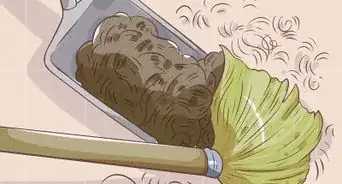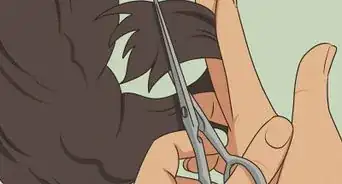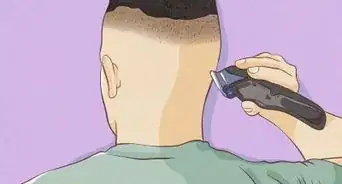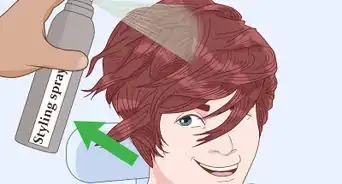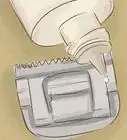This article was co-authored by Ashley Adams and by wikiHow staff writer, Amy Bobinger. Ashley Adams is a Licensed Cosmetologist and Hair Stylist in Illinois. She completed her Cosmetology education at John Amico School of Hair Design in 2016.
There are 9 references cited in this article, which can be found at the bottom of the page.
This article has been viewed 177,139 times.
Cutting a man’s hair in a long style is easy, although it takes a little more work than just cutting it the same length all the way around. If the hair is all the same length, it will look heavy and dull, and it won’t have much movement. By adding in a few subtle layers, you’ll be able to create a medium- or long-length look that any guy can wash, wear, and love!
Steps
Trimming the Hair
-
1Shampoo, condition, and towel-dry the hair. It’s easier to make precise cuts when hair is damp, but if it’s too wet, the hair will stretch out and appear longer than it actually is. To avoid accidentally cutting too much of the hair, have the guy wash and condition his hair, then gently pat it dry with a towel until it’s just damp.
- If the guy’s hair is very curly, you may have better results if you dry-cut his hair instead. Hair looks longer wet than dry, so cutting it dry will give you a better idea of how it will actually look in its dry state.
- You can also lightly spritz his hair with water to dampen it, if you prefer. Just make sure the hair is dry enough that it springs into its natural curl pattern.[1]
-
2Comb the guy's hair out while it's still damp. Comb the top of the hair into a vertical center part. The hair should be hanging down on the sides, with the hair in front of the ears combed slightly forward. Then, comb the rest of the hair back so it lies flat against the back of the man's neck.
- It may help to make a second horseshoe-shaped part running from the back of one ear, around the top of the head, and behind the other ear. Comb the hair in front of the part forward so it hangs down into the guy's face, and comb the rest of the hair down to the sides and back.
Advertisement -
3Use the tips of the scissors to trim the hair across the back of the neck. Pull the hair straight down and hold the scissors so they’re parallel to the hair. Place the tip of the scissors into the hair where you want to make the cut, then lightly snip the hair in a straight line across the back of the neck. This technique is called point-cutting, and will give the hair a softer look. If you hold the scissors sideways and cut straight across, the hair will look very blunt and it won’t move naturally.[2]
- To leave as much length as possible, just cut off about 1⁄2–1⁄4 in (1.27–0.64 cm) at the end of the hair. This will help remove any split ends. If you are cutting more than that, remember to take into consideration how much the hair will shrink when it dries, since hair stretches when it’s wet and looks longer. Curly hair will be much shorter dry than it is wet, but even straight hair will be somewhat shorter once it dries.
- It’s best to use a pair of shears intended for cutting hair. You can find these at any beauty supply store, as well as at many drugstores.
Styling Tip: Pull the hair straight down and keep your fingers close to the neck so you don’t undercut the hair.
-
4Cut the hair on the sides using the hair from the back as a guide. After you’ve finished cutting the back, move to one side. Comb the hair that’s in front of the ear so it lies straight down, and bring up a little of the hair from the back so you can see the change in the length. Then, hold the hair with your fingers angled slightly upward toward the front of the head, and cut the hair so it’s the same length where it meets the back, then slightly shorter closer to the face. Then, repeat on the other side.[3]
- The length of the hair in the back will act as a guide to help you determine how long the rest of the hair should be.
-
5Comb all of the hair in front of the ears forward. After you’ve cut both sides, use your comb to smooth the hair forward over the guy’s face. Then, use your fingers to pull the hair down as straight as you can.[4]
- Cutting the hair while it's combed to the side will help the length blend into the back more evenly, but combing it to the front will allow you to check the accuracy.
-
6Compare the sides to make sure the lengths are even. Once you've combed the hair forward, look carefully at the front of the hair, and pull pieces from the sides together in front of the guy's face. For instance, you could take a piece from the same point on either temple and hold them together. The lengths should be the same. If any pieces are uneven, make small adjustments until the cut is symmetrical.[5]
- After you make any changes, you may want to comb the hair to the side to make sure that the length still blends evenly into the back.
- If you want to, you can just stop here. Dry the hair, then check the length to make sure it's even on both sides and there aren't any pieces that need to be trimmed. However, to create a natural-looking style that looks more like it was done by a professional, add in a few subtle layers.
Adding Layers
-
1Comb the hair so it’s parted how the guy normally wears it. After you’ve trimmed the hair to the general length you want, comb it again. This time, part it how the guy prefers to wear it. This might be a center part, or it might be off to one side. This will allow you to cut it so it looks natural when he wears his hair down.[6]
- To find his natural part, comb the hair straight back, then push it forward a few times with your comb. Look for the place where the hair parts on its own.
-
2Pull out a 1⁄2–1 in (1.3–2.5 cm) vertical section from the back of the hair. Use your comb to separate a section of hair running from the crown of the head all the way down to the nape of the neck. The section should only be about 1⁄2–1 in (1.3–2.5 cm) wide. Close your index and middle fingers around the section of hair and slide them to the end of the section, lifting the hair so it’s straight out from the guy’s head.[7]
- When you see a small piece of hair fall from the bottom of your fingers, stop moving your fingers. This is the guide piece that will help you determine how long to cut the layers.
-
3Point-cut the hair straight up along the section you’re holding. Once you see the guide piece fall from between your fingers, use the points of your scissors to cut vertically into the section you’re holding. Cut all the way up the hair, continuing to hold the section straight out away from the head.[8]
- This technique creates soft, subtle layers, removing weight from the bottom of the hair.
-
4Repeat with a new section, using a little of the hair you just cut as a guide. Drop the section you just cut, then pick up a new one right next to it. The new section should be about as wide as the previous one, no more than 1⁄2–1 in (1.3–2.5 cm). As you’re sectioning out the new piece, pick up a little of the hair from the first section. Use that hair as your guide to help you determine how long to cut the new section.[9]
- If you can’t see the shorter hair, you probably picked up too much hair. Drop the section you’re holding and try again with a little less hair this time.
-
5Continue around the back of the head to just behind each ear. Cut the hair in sections from the bottom to the top of the head, first around one side, then to the other. Stop when you get to each ear, though, because you’ll need to use a slightly different technique for the sides and the top of the hair.[10]
- Each time you pick up a new section, include a little of the previous section. This will ensure you create consistent layers all the way around the hair.
- When you use the length of the previous section to guide the length of your next cut, this is called a “traveling guide.”
-
6Lift the hair at a 45° angle as you cut the top and sides. When you reach the sides, instead of pulling the sections straight out from the head, lift them up to about a 45° angle instead. Using the same technique as you did for the back, cut all the way up the section with the tips of your scissors. Holding the hair at an angle will account for the curve of the top of the head, allowing the layers to fall naturally. These new layers will also blend more subtly into the ones you cut in the back.
- Keep using the hair you’ve already cut as a guide as you layer the front and the sides of the hair. The length of the layers should be consistent all the way from the back to the front.
- Check a few sections against each other as you finish layering the hair. Pull the sections straight up, angled slightly, and out to the side to compare the length to make sure there aren’t any pieces that are longer than the rest.
Styling Tip: To create more defined layers, pull the front of the hair straight up, rather than cutting it at a 45° angle.
-
7Dry the guy’s hair and check to make sure the cut looks even. Once the cut is dry, if there are any pieces of hair that look out of place, use your scissors to trim them up. Remember to use only the points of your scissors; otherwise, you could end up with obvious lines in the hair, and you’ll have to cut the hair much shorter to fix it.[11]
- At this point, you should only have to make minor adjustments. If there are any major sections that look too long or that seem to be very jagged, dampen the hair and start again.
Things You'll Need
- Shampoo
- Water
- Towel
- Hair clips (optional)
- Comb
- Hair-cutting shears
- Blowdryer
References
- ↑ https://www.allure.com/story/curly-haircut-technique
- ↑ https://youtu.be/CPO0mO-ubEw?t=24
- ↑ https://youtu.be/CPO0mO-ubEw?t=79
- ↑ https://youtu.be/q4-5V66HHdw?t=335
- ↑ https://youtu.be/q4-5V66HHdw?t=335
- ↑ https://youtu.be/q4-5V66HHdw?t=373
- ↑ https://youtu.be/q4-5V66HHdw?t=419
- ↑ https://youtu.be/CPO0mO-ubEw?t=248
- ↑ https://youtu.be/CPO0mO-ubEw?t=333
About This Article
If you want to give a man a long haircut, start by trimming the hair all the way around. Then, pull out a vertical section of hair from the very back of his head, reaching from the crown to the nape of the neck. Trim this hair from the bottom to the top, then drop it and pick up a new section. Include a little of the hair you just cut in the new section and use it as a guide. Continue trimming the hair in sections all the way from the back to the front to create subtle layers. For tips on how to hold the hair while you're cutting it, read on!
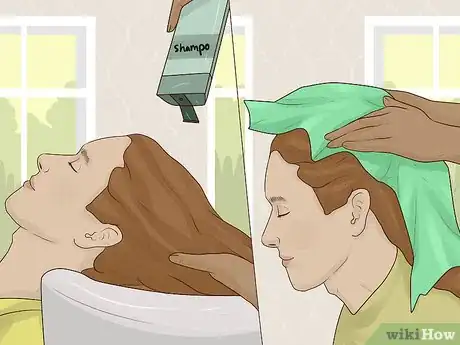
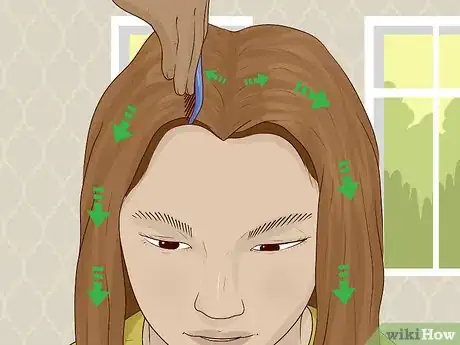
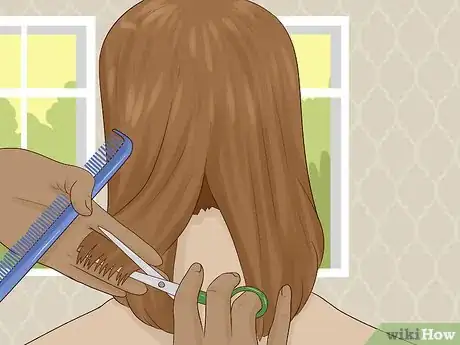
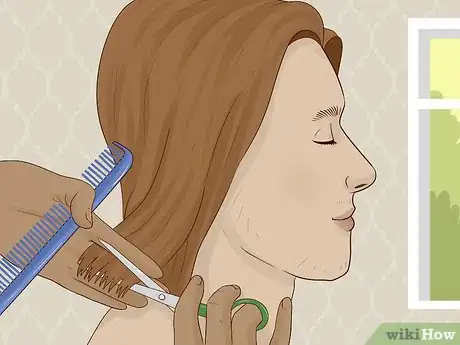
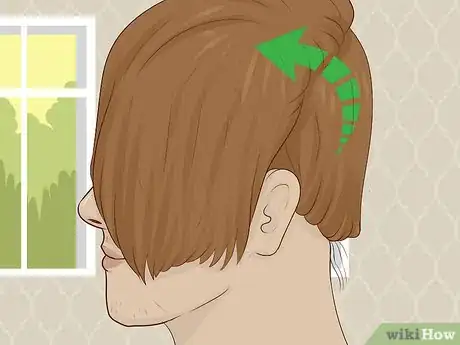
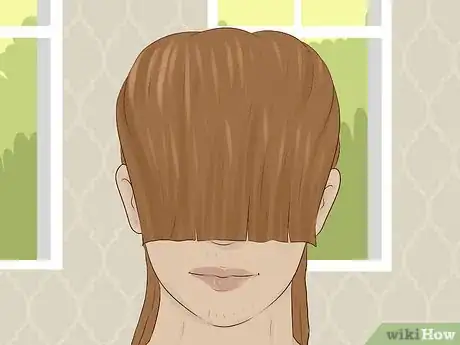
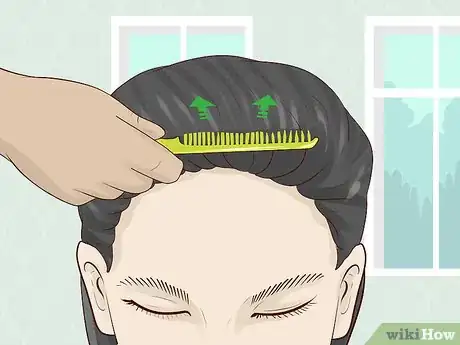
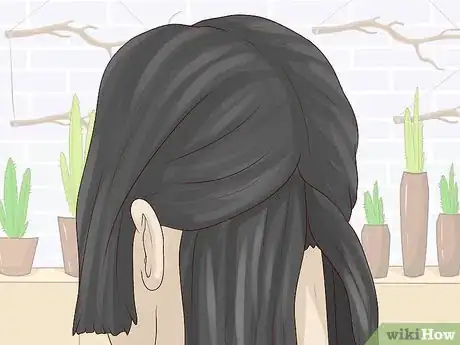

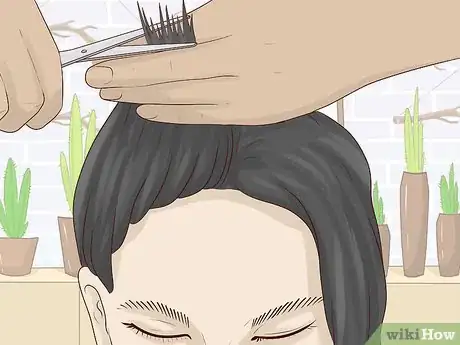
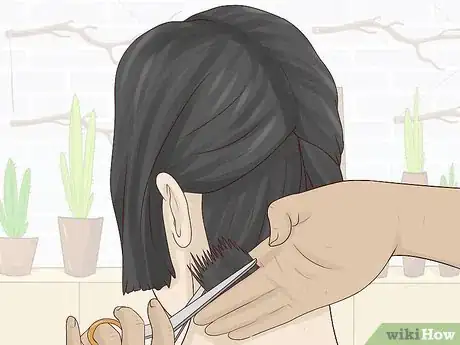
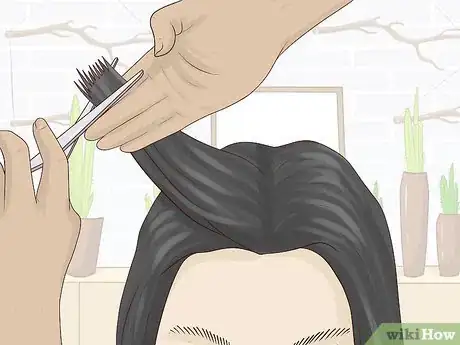
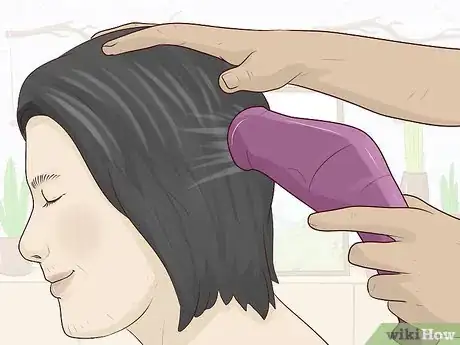
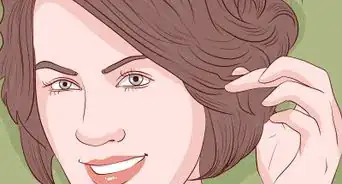
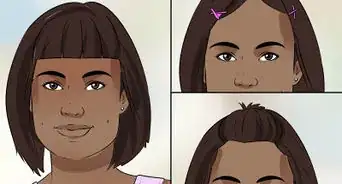

-Step-18-Version-2.webp)
